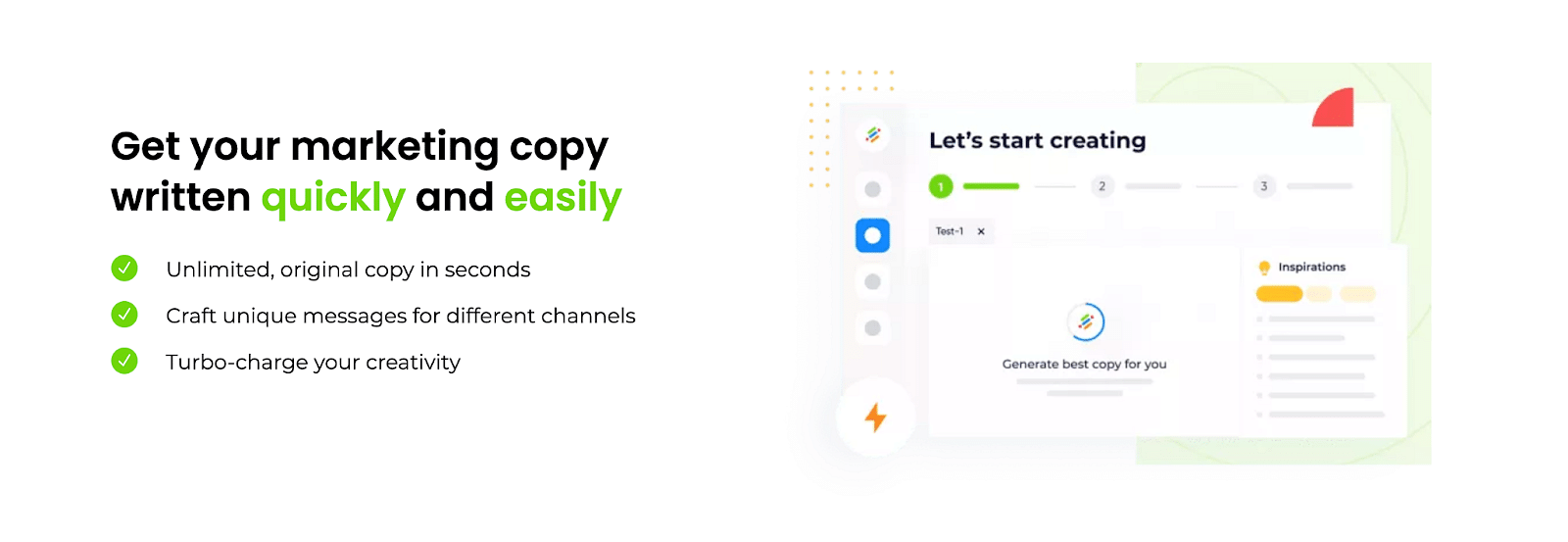
Write better copy for your brand with AI-powered software, neuroflash
By Jim James, Founder EASTWEST PR and Host of The UnNoticed Entrepreneur.
Jonathan Mall is a Doctor of Psychology. He’s also the founder and Chief Executive Officer of neuroflash, which helps tongue-tied, pen-tied, and keyboard-restricted business owners create great copy.
Image from LinkedIn
What is neuroflash?
neuroflash is an artificial intelligence (AI) software that automatically generates and optimises short-form marketing text. It helps marketers find messages that resonate with their consumers.
The big difference between neuroflash and other tools is accuracy. Their unique selling proposition is that their proprietary semantic approximation and emotion mapping algorithms can predict consumer associations and feelings in 17 languages with up to 99% accuracy. This means that if you’re a brand and you have a persona that you want to address, the software can ensure that your message is effectively conveyed. When you write something, people will understand what you want them to understand. You won’t only get higher conversion rates, but also make people connect your brand with their lives.
How it Works
The software works in three steps. First, you have to provide a brief that describes the content that you want to create. It could be one or two sentences containing words that will help the machine understand who you are and what type of business you have.
Based on that, the AI will then create the text. If you want an email subject line, it will create 10 to 20 email subject lines. If you want a slogan, it will produce 20 slogans.
Screengrab from neuroflash
The third step is about differentiating plain text from a text that gets clicked and helps people understand your brand. It’s a crucial one because it’s anchored in the ability to trigger certain automatic thoughts and emotions.
In marketing, if a short-form content is highly emotional and has a clear topic that is in line with your brand values, then the message is considered effective. It allows people to understand who you are. With those few words, you can make them feel that everything is congruent, enticing them to go right into your longer form of content.
Going Beyond What Headline Analysers Do
Today, there are tools that analyse headlines. And they’re all about using powerful and emotive words. However, neuroflash goes beyond those because it is very flexible when it comes to conveying certain types of associations.
If you have a topic that is highly specialised or your brand has some special features — these things have to be conveyed in order to get people to click on your headline. Additionally, your headline should also be able to convey that you’re authentic.
Many businesses will say, “I’m an authentic brand, click this headline” or “This is a great product.” But, in reality, nobody will click those. With neuroflash, their engine can see words such as “true,” “original,” and “traditional,” which are strongly associated with authenticity. And if these words are utilised and people get to read them, they’d get the idea that the content comes from an authentic source or brand.
Apart from the words themselves, you also have to ensure things like emotionality. If a piece of content is exciting and on-brand, it will entice people to click.
Predicting Automatic Thoughts and Emotions
neuroflash is able to predict two things: automatic thoughts and emotions. For Jonathan, emotion is relatively easier to explain because they’ve already done over 60,000 surveys involving 17 languages in over 20 countries. In the surveys, they asked people how they feel about a certain word. Through that, they’re able to predict any other word that they didn’t ask. Their algorithm has an accuracy between 93 to 99%.
In terms of associations — on how opinions are created — they reverse engineer.
Image from Unsplash
Talking a bit about psychology, Jonathan mentioned how politicians and brands convince people that they are great. They do so by doing public relations, by being seen in certain situations, and by having articles and headlines written about them. These are content that connects words and their brand or product name to something positive. For instance, “This tape is super strong.” They use “strong” because people trust the strong. If you have a brand that says it’s strong and they repeat that messaging over and over through marketing, people will think that it is really strong. Consumers will have that automatic thought because they’ve heard the message over and over again. In their brain, these two things have already gotten connected.
This is also seen in this age of COVID-19. In Germany, for example, Jonathan cited how there are a lot of headlines about the AstraZeneca vaccine and its side effects. There are also headlines about BioNTech, but there are fewer. With it, people became more reluctant to take AstraZeneca than BioNTech because the former had way more headlines associating side effects with the vaccine brand.
This goes to show how opinions are created. And it’s the same for brands, products, and even politicians.
Knowing that what people read, hear, and consume influences them because it creates associations, nueroflash looks at texts that audiences would potentially read. Then, they extract from them the likelihood that a single word is indeed associated with another one. If you want to express authenticity or trustworthiness without saying the actual word, the software can tell you which words are closest to those terms. Implicitly and subconsciously, you give people the idea that you are being authentic and trustworthy.
In essence, it works almost like a giant thesaurus that has your goal in mind. You can simply set certain things in their engine (e.g., you want your brand to be associated with authenticity, you want to have more trendy terms for your audience), then the software will check for any generated text — and how easy it would be for people to get from that text the idea that you want to convey.
When you simply say, “Hey, trust me.” It will never work because people would say, “Why should I trust this guy? His message is too straight.” There’s conscious thinking that goes on. However, if you tell experience — for example, you’re a guy who always gives presents to his mother for her birthday — you can better gain trust because the word “mother” is highly associated with trust. By painting that picture — and using that word — in context, you can help people understand that you are trustworthy.
Helping Your Business with Positioning
There are so-called industry leaders in different categories and sectors. For example, Hertz for automobiles, Apple for computers, and Pfizer for pharmaceutics. According to Jonathan, you can use neuroflash to identify what these leading companies are doing and help position yourself in similar ways.
Image from Unsplash
When you use the software, you have to define it as a goal. Put in a brand name and the engine will look at words that are closely associated with it. For instance, if you want to be more rebellious, you can key in Adidas or Nike.
These brands speak in a certain way and they use certain words. With the help of neuroflash, you can use words that are closest to the words being used by the brand that you are trying to emulate.
Creating Channel-Specific Content
Recently, neuroflash had a client who used the same brief to create a slogan for a Facebook headline and a Google advertisement. Through the software, he was able to create both. In the sidebar, he also saw how strong each of the copy was in terms of brand values and the emotions that they’re trying to trigger.
With neuroflash, you can create channel-specific content that has the appropriate length. The software can also incorporate other features like the use of emoticons, which are more prevalent on certain channels.
You can also ensure that the tonality is similar across all your channels.
Keeping the Software Updated
According to Jonathan, they also make sure that neuroflash is up-to-date. For example, if you want to be like Adidas (who, two years ago, had certain campaigns that are quite different from what they have today), their engine is updated to reflect the brand’s current zeitgeist.
If the meaning of a word or the positioning of a brand changes, neuroflash can automatically and immediately show it. Despite societal changes and cultural zeitgeists, you can stay accurate about how you can show that you’re a truthful and authentic brand.
However, in terms of topicality, Jonathan recommends looking at a newspaper instead. For instance, if you’re talking about American athlete Simone Biles pulling out of gymnastics at the Olympics, the context is different now than what it was a month ago when she was still in the tryouts. However, the association remains that she’s working hard and she’s one of the best.
neuroflash uses around 12 months of text data from mass media, social media, and other platforms to create semantic approximations and understand certain topic associations. This means that the grander things are always updated. But, as Jonathan noted, if you want to know exactly what happened today, looking at a newspaper is what is recommended.
Image from Unsplash
For him, if you’re changing your marketing positioning every day, your strategic foresight is questionable. After all, the best communication is one that changes very slowly but has a strong core. And even though that core also changes gradually over time, the key remains in trying to be consistent. You have to be consistent and not simply transitory with whatever the latest fad is.
On Humility and Trust
One thing that Jonathan — and many people in his team who have a scientific background — values is humility.
When you make mistakes, you should disclose and correct them. This is something that neuroflash does, and it has actually surprised their clients. Today, many people are all about working with businesses that are always right and do everything perfectly. However, once that business makes a mistake, the tendency is for clients to switch to another.
This is why Jonathan and his team have always tried to be very open about that. If they made a mistake, they will be the first to say so. But they will also offer corrections. In the end, it leads to them gaining more trust. And it’s trust that carries businesses forward. While these could be situations wherein a relationship is put to the test, they’re also a way to show how strong and reliable that relationship is.
As neuroflash builds itself as a brand, they also make sure to carry a certain set of values forward. These include reliability, trustworthiness, authenticity — and a healthy dose of playfulness. In the end, while they’re obviously dealing with money, the best content out there is one that makes people smile; one that makes people feel something. When they write newsletters and headlines on their website, they always try to incorporate these values whenever possible.
How neuroflash Attracts Leads
In terms of bringing a supply of leads to their funnel, neuroflash uses a dual path.
The first is through referrals. In the past and to this day, they’ve been working with different brands. And if we talk about brands like Adidas, Nivea, or Volkswagen, it’s a lot about trust. Thanks to their relationships with other brands, they’re able to get referrals.
Image from Unsplash
When you’re in the enterprise sector, the best way to grow is through those. Because it’s through referrals that you get to meet another Chief Marketing Officer (CMO) and talk to them. There are other ways to get to them but those are more costly, time-consuming, and not always reliable.
For inbound leads, they use the normal mix of search engine optimisation (SEO), conferences, PR, and anything that will help them get the word out.
Currently, neuroflash can rate content in 17 languages and produce content in German and in English. Over the next months, they also plan to add more languages. If you want to try out their tool, they are offering a seven-day free trial on their website, www.neuroflash.com. You can also contact Jonathan through his LinkedIn account.
This article is based on a transcript from my podcast The UnNoticed Entrepreneur, you can listen here.
Cover image by Malte Helmhold on Unsplash.







